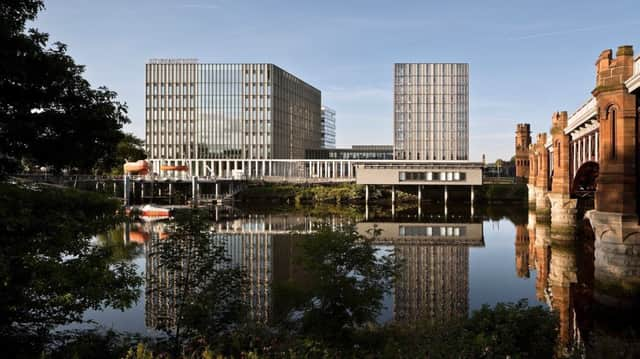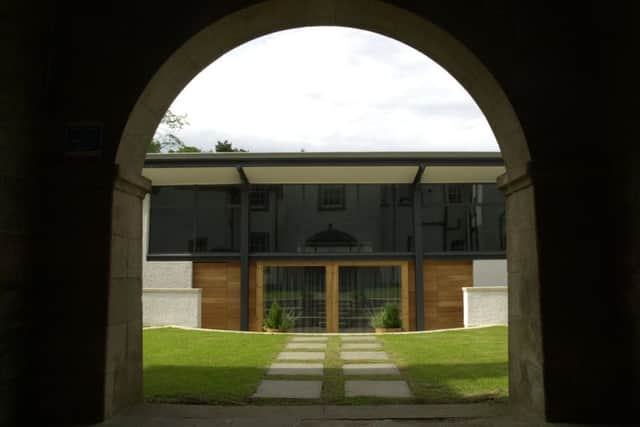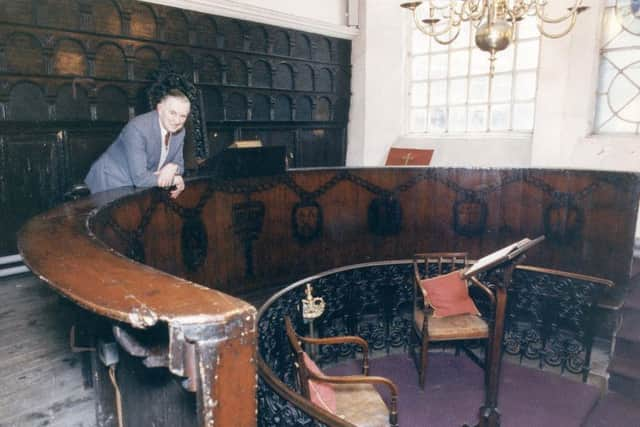Doors Open Day 2016: 5 buildings to see in Edinburgh and Glasgow


Doors Open Days is Scotland’s largest free annual architectural event, coordinated nationally by the Scottish Civic Trust.
It allows the public to discover the fascinating stories of landmark buildings that are usually off-limits.
Advertisement
Hide AdAdvertisement
Hide AdFirst held in Glasgow and Ayr in 1990, the event has since grown to cover every corner of the country and is held continuously throughout September.


More than 800 buildings are expected to open, generating over 200,000 visits to hidden architectural gems including Scotland’s first purpose-built crematorium and the Edwardian headquarters of Partick Curling Club.
The Glasgow programme began on Monday and continues until September 18. The Edinburgh programme, which is organised by the Cockburn Association, runs on September 24 and 25.
John Pelan, director of Scottish Civic Trust, said: “2016 is the 27th year we have been co-ordinating the national Doors Open Days programme and it would not be possible without the work of the many, many volunteers and co-ordinators who create and deliver the programmes in their areas.”
CLYDE PORT AUTHORTIY HEADQUARTERS (Robertson Street, Glasgow)


An A-listed masterpiece normally closed to the public, this building reflects the importance of Glasgow as a centre of maritime trade and shipbuilding in the late 19th and early 20th centuries. It was built in 1886 to the designs of Sir John Burnett for the Clyde Navigation Trust, which oversaw the widening of the river to accommodate larger vessels and was once of the most powerful civic authorities in Scotland. Today the building is home to Clydeport, the private successor organisation to the Trust.
HARMENY SCHOOL (Mansfield Road, Balerno)
A residential school for children with severe emotional and behavioural difficulties, Harmeny Education Trust is an independent charity, based in a listed country house built at the turn of the 19th century and extensively remodelled in 1910. A sympathetic extension to allow for more classroom space was built in 2012.


RIVERSIDE BUILDING (Thistle Street, Glasgow)
Advertisement
Hide AdAdvertisement
Hide AdThe City of Glasgow College’s Riverside campus opened in 2015 and is hailed as the most technologically advanced maritime campus in the world. Based on the south bank of the Clyde, it was recently nominated for the prestigious Royal Institute of British Architects (RIBA) Stirling Prize - awarded annually to the best new building in the UK. The building, part of a new £228 million twin-site campus, has been widely praised for the way it connects with the city’s waterway and is already regarded as a landmark.
MAGDALEN CHAPEL (Cowgate, Edinburgh)
One of the oldest buildings in the capital, this unique chapel and almshouse was built between 1541 and 1544 by Janet Rynd, widow of Michael MacQueen, who left money for its construction. It was intended as a new chapel for the Incorporation of Hammermen, who retained ownership as late as 1857. It contains the only stained glass to survice the Protestant Reformation of 1560.


ANATOMICAL MUSEUM (Teviot Place, Edinburgh)
Built as part of the University of Edinburgh’s medical school in 1888, the Anatomical Museum remains a valuable teaching resource for students. It is better known however for its macabre exibits, which include more than 1500 human skulls. The museum also houses the life and death masks, anatomy teaching models and the skeleton of notorious 19th century murderer William Burke.
For the full Doors Open Days programme, visit the Scottish Civic Trust website.
